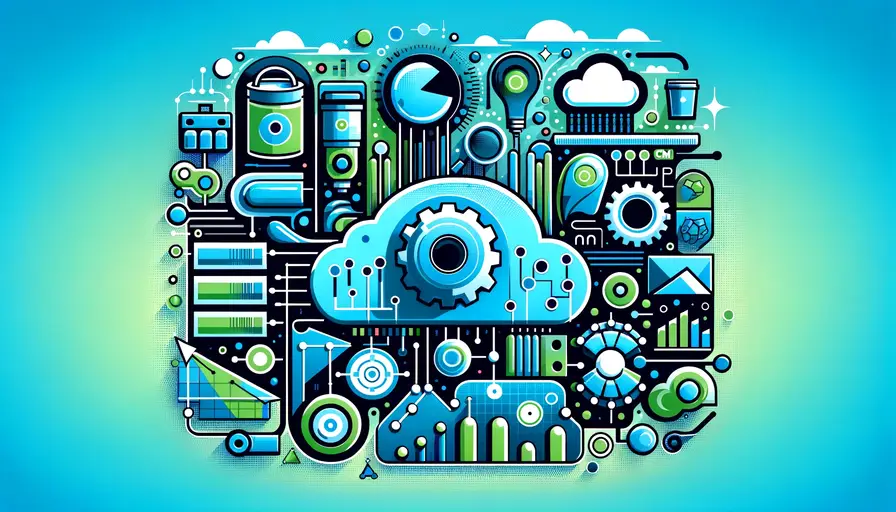
Is CML the Ultimate Solution for Machine Learning Pipelines?

Why CML is a Valuable Tool
Continuous Machine Learning (CML) offers significant advantages for managing machine learning pipelines. It integrates seamlessly with CI/CD systems, allowing data scientists and engineers to automate and streamline workflows. This integration ensures that models are continuously updated, tested, and deployed, reducing the time from development to production.
CML's ability to manage the entire lifecycle of machine learning projects—from data preprocessing to model deployment—makes it a powerful tool. By automating repetitive tasks, CML frees up valuable time for data scientists to focus on more complex and creative aspects of their work. Additionally, CML's support for version control systems ensures that all changes are tracked, facilitating collaboration and reproducibility.
Another major benefit of CML is its scalability. It can handle both small projects and large-scale machine learning operations. This flexibility makes it suitable for various applications, whether it’s a simple predictive model or a complex deep learning pipeline. CML’s ability to scale with the project’s needs ensures that it remains useful as the project grows.
# Example: Using CML for automating a machine learning pipeline
import cml
# Initialize the CML pipeline
pipeline = cml.Pipeline()
# Add steps to the pipeline
pipeline.add_step('data_preparation', script='prepare_data.py')
pipeline.add_step('model_training', script='train_model.py')
pipeline.add_step('model_evaluation', script='evaluate_model.py')
# Run the pipeline
pipeline.run()Limitations of CML
Despite its advantages, CML is not without its limitations. One significant challenge is the learning curve associated with its implementation. Teams that are not familiar with DevOps practices might find it difficult to set up and configure CML effectively. This steep learning curve can be a barrier for small teams or organizations with limited resources.
Comparing On-Premise vs Cloud for ML Model DeploymentAnother limitation is the dependence on existing infrastructure. CML relies on integration with CI/CD systems and other tools, which can sometimes lead to compatibility issues. Ensuring that all systems work together seamlessly can require considerable effort and expertise. These integration challenges might delay implementation and increase the overall complexity of the workflow.
Additionally, CML may not be the best fit for every project. For simpler machine learning tasks, the overhead of setting up and maintaining a CML pipeline might outweigh the benefits. In such cases, using a more straightforward approach or a different tool might be more efficient. It is crucial to assess the specific needs of the project before deciding to use CML.
There are Other Tools and Frameworks
Diverse Options for Pipelines
While CML is a robust tool, it's important to recognize that it is just one of many options available for managing machine learning pipelines. Tools like Kubeflow, MLflow, and Airflow offer different features and capabilities that might be better suited to specific use cases. Each tool has its strengths, and exploring these alternatives can help identify the best fit for a particular project.
Kubeflow, for instance, is designed to run machine learning workflows on Kubernetes. It provides a range of tools and services for building, deploying, and managing models at scale. Its integration with Kubernetes makes it an excellent choice for organizations that are already using this technology, offering robust scalability and flexibility.
Machine Learning Studio vs. Service: Which is Better?MLflow focuses on the tracking and management of machine learning experiments. It provides an easy interface for logging and comparing results, packaging code, and sharing models. This focus on experiment management can be particularly useful for research teams or projects that require extensive experimentation and iteration.
Comparing with Other Tools
Comparing CML with other tools such as Airflow helps in understanding the unique strengths and weaknesses of each. Airflow excels in managing and scheduling complex workflows, making it ideal for tasks that require detailed orchestration. However, it may require more manual setup and configuration compared to CML’s more automated approach.
Airflow’s flexibility in defining workflows as directed acyclic graphs (DAGs) provides a high level of control over task execution. This can be advantageous for complex data processing pipelines that require precise scheduling and dependency management. However, the need for detailed configuration can be a drawback for teams looking for a more streamlined solution.
# Example: Defining a workflow in Airflow
from airflow import DAG
from airflow.operators.python_operator import PythonOperator
from datetime import datetime
def prepare_data():
pass
def train_model():
pass
def evaluate_model():
pass
# Define the DAG
dag = DAG('ml_pipeline', start_date=datetime(2022, 1, 1))
# Define the tasks
prepare_data_task = PythonOperator(task_id='prepare_data', python_callable=prepare_data, dag=dag)
train_model_task = PythonOperator(task_id='train_model', python_callable=train_model, dag=dag)
evaluate_model_task = PythonOperator(task_id='evaluate_model', python_callable=evaluate_model, dag=dag)
# Set task dependencies
prepare_data_task >> train_model_task >> evaluate_model_taskCML is Just One Option
Benefits of Using CML
CML offers numerous benefits that make it an attractive option for many machine learning projects. Its ability to automate complex workflows and integrate seamlessly with CI/CD systems reduces the manual effort involved in managing machine learning pipelines. This automation not only saves time but also minimizes the risk of human error, leading to more reliable and reproducible models.
Find the Ideal Platform for Your Machine Learning ProjectsAnother key benefit of CML is its support for version control. By integrating with systems like Git, CML allows users to track changes to their code, datasets, and models. This version control is crucial for maintaining the integrity of machine learning projects, ensuring that all changes are documented and can be rolled back if necessary.
Furthermore, CML's scalability makes it suitable for both small and large projects. It can handle simple workflows as well as complex, multi-stage pipelines, making it a versatile tool for different types of machine learning tasks. This flexibility ensures that CML can grow with the needs of a project, providing a robust solution for evolving requirements.
Considerations Before Using CML
Before deciding to use CML, it is important to consider a few key factors. First, assess the complexity of the project and determine whether CML's capabilities align with the project's needs. For smaller projects or those with less complex workflows, simpler tools might suffice and be more cost-effective.
Another consideration is the team's familiarity with CI/CD practices and DevOps principles. Implementing CML requires a certain level of expertise in these areas, and teams that lack this knowledge might face a steep learning curve. Investing in training or hiring experienced personnel can mitigate this challenge but should be factored into the decision-making process.
Flask: Best Practices for Deploying ML ModelsConsider the existing infrastructure and tools used within the organization. Ensuring that CML integrates smoothly with the current setup is crucial for seamless operation. Compatibility issues can lead to significant delays and additional costs, so it is important to thoroughly evaluate how well CML will fit into the existing ecosystem.
While CML is a powerful tool for managing machine learning pipelines, it is not the ultimate solution. There are numerous other tools and frameworks available, each with its unique strengths and weaknesses. By carefully evaluating the specific needs of a project and considering the capabilities of different tools, organizations can select the best solution for their machine learning workflows. Whether it's CML, Kubeflow, MLflow, or another tool, the key is to find the right fit that optimizes efficiency, scalability, and performance for the given use case.
If you want to read more articles similar to Is CML the Ultimate Solution for Machine Learning Pipelines?, you can visit the Tools category.



You Must Read